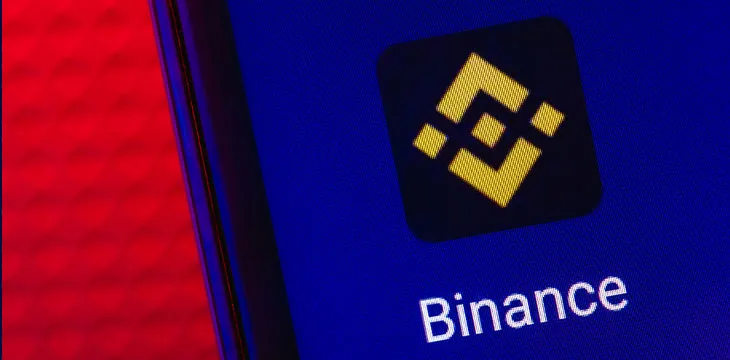|
Getting your Trinity Audio player ready...
|
When FTX declared bankruptcy on November 11, the fall from grace of philanthropist and ‘darling of the digital’ Sam Bankman-Fried (SBF) was complete. He has stepped down as CEO and is now facing multiple civil suits as well as potential jailtime.
The industry was left reeling, with major concerns that the infection would spread, causing a chain collapse across other digital currency exchanges and assets.
Enter Binance, who announced days after FTX filed for bankruptcy that it was setting up an industry recovery fund to “buy distressed crypto assets” and “to reduce further cascading negative effects of FTX.” The king is dead, long live the King.
CZ later explained that the fund would have a “loose approach where different industry players will contribute as they wish.”
Crypto’s new altruist-in-chief specified that he was targeting $1 billion or more for the fund and “if that’s not enough we can allocate more.” Lo and behold, on November 25 Binance added another $1 billion to the initiative, this time “all in BUSD,” or Binance USD—its own USD-denominated stablecoin, launched in partnership with Paxos.
This recovery fund isn’t the mammoth exchange’s first foray into the murky world of ‘charity’ lending. In October Binance Pool started a $500 million lending project for private and public miners, citing its “responsibility to help maintain a healthy digital asset ecosystem.”
This time though, the emphasis is on recovery: “We want the strong industry players today to protect the good industry players who might just be hurt short term,” said CZ in a recent CNBC interview.
According to Binance, more than 150 companies have already applied for support from the fund, a worryingly high number, as over the next six months Binance will be potentially propping up over a hundred digital asset players, partly using its own stablecoin—but don’t worry it’s only the “the good industry players,” as judged by Binance.
Given that it was CZ’s own actions which pulled the trigger on the FTX ponzi, destabilizing the digital asset market and dooming any company sufficiently connected to the FTX network, it’s fair to examine whether Binance’s recovery fund is what it appears to be.
A wolf in wolf’s clothing
“Everyone is very scared, and this initiative aims to restore calm in the markets,” explains Carol Alexander, professor of finance at the University of Sussex, speaking with CoinGeek. “But let’s not forget that it will also boost the market cap of BUSD, which is to Binance’s great advantage. I predict that the cap of BUSD will very soon exceed that of USDC, so BUSD becomes the No2 stablecoin, after tether (USDT).”
So, Binance is, completely without ulterior motive, ploughing its own stablecoin BUSD into the fund, which is likely to see its market cap soar. Such a move would be in line with Binance’s recent strategy toward the stablecoin market: in September, the exchange announced that it was delisting (and forcibly converting) USDC, TUSD and USDP from its platform, making BUSD and Tether the only stablecoins available on the exchange.
Binance’s decision to pump its recovery fund full of its own stablecoin is also notable given the press around stablecoins over the past 12-24 months.
The largest stablecoin by circulation, Tether, or USDT, has made itself indispensable to almost every digital asset exchange as a tool for integrating new money, managing and growing liquidity, leveraged trading and pricing digital assets. Tether promotes its use by claiming it can back up every USDT coin with $1 (or its equivalent, depending on the day) of asset reserves, making it a reliable foundation for the industry.
However, Tether has consistently failed to prove whether it really holds the reserves it should do. A 2019 investigation by New York Attorney General Leticia James revealed that Tether had covered up a $850 million hole in the Tether reserves including by moving non-Tether funds into a Tether bank account on the day it had promised to produce an ‘attestation’ as to its holdings, only to move them out the day after the attestation was published.
Whether Tether (or any stablecoin) is backed really matters, because it is frequently swapped for assets like BTC on the basis that the USDT is worth an equivalent amount in USD. If it isn’t, then trading volumes and asset prices are being massively inflated despite no new money flowing into the system—which makes conditions ripe for the same kind of run on Tether that happened with FTX and FTT.
If this wasn’t reason enough to question Tether’s role in the industry, in 2021 Protos revealed that Alameda Research and Cumberland Global were responsible for transferring around two-thirds of all Tether into the crypto ecosystem.
Alameda, the now notorious hedge fund arm of FTX, is reported to have lost $3.7 billion since inception, and yet somehow managed to be Tether’s best customer, purchasing over $36.7 billion USDT from Tether up until October 2021—an amount which accounted for over 30% of the total USDT issued.
It only takes some basic math to see an anomaly here, if every 1 USDT is supposed to backed by $1 in assets, Alameda should have paid for it in USD, or something that can be credibly approximated to USD – USD which seemingly they were losing at an alarming rate.
So, either court cases and future investigations will reveal where the hell Alameda got the funds to pay Tether 10 times what it was losing, or more worryingly, Alameda did not pay Tether $36.7 billion in USD for the $36.7 billion in USDT that it received, and Tether have been rolling out unbacked tokens again.
Tether listed Binance as the largest holder of USDT in 2021, but has since scrubbed the so-called rich-list. How much of Binance’s liquidity is tied to Tether, and other Tether-tied assets such as BTC, is a concern for its recovery fund and those receiving their life-saving payments in BUSD?
It appears Binance is also made up of funny money https://t.co/XS4pwSs60F
— Amy Castor (@ahcastor) November 11, 2022
Reading between the lines, an ailing industry is about to become substantially more reliant on Binance, who could see the utility of its own stablecoin skyrocket. What could go wrong?
The grateful dead
At the very least, it makes sense for Binance to play savior in a time of industry crisis. For one, it’s a chance to snap up competitor assets and brands for pennies on the dollar. But more importantly, as the exchange boasting the largest volume out of anyone, Binance has a lot to lose from a black swan-like digital asset crash.
“Binance still needs the fee income from ordinary investors,” explains Alexander. “So, as well as calmer markets, a bull market in bitcoin, which I anticipated on 23 November, will bring ordinary investors back into crypto.”
Binance has yet to give out any money, or reveal who the lucky-unlucky companies are that have already asked for assistance, which raises the questions: who are they and why do they need the money? Or, how many of the companies are insolvent and, perhaps, should not be saved?
Is Binance one of them?
Unfortunately, by Binance’s own apparent design, there are few chances at getting an honest look at their finances and operations.
Binance is generally subject to the world’s regulators insofar as they are based or serve customers in their respective jurisdictions, but Binance is coy about whether they fall into either category; CZ once famously proposed that Binance had no offices because Bitcoin had no offices.
It’s tempting to write this off as marketing puffery, but a report from Reuters published in October this year revealed that CZ and Binance staff actively plotted to dodge regulators in the U.S. and U.K. such as, for example, setting up a decoy, fully compliant entity in the U.S. to draw attention from regulators while surreptitiously directing traffic to the main, non-compliant exchange.
The damning report demonstrated that while Binance chief CZ might say out of one face that he “embraces regulations” and has always worked collaboratively with regulators all over the world, out of his other face he was instructing “lieutenants to “insulate” Binance from scrutiny by U.S. authorities.
This is significant because it is the rules of those regulators that would, for example, require Binance to disclose its audited financials to investors. If Binance is operating under the fiction that it ‘has no office’, and if it is operating with an FTX-like hole in its balance sheet, then it will not feel obliged to whip down its trousers and show it to anyone.
Binance needs a billion dollar bailout. Except he claims it’s to help other firms. It’s bullshit. Same bullshit as FTX.
Binance has a hole they’re trying to fill in. https://t.co/TzZ6HmUHa0
— Bitfinex'ed 🔥🐧 Κασσάνδρα 🏺 (@Bitfinexed) November 24, 2022
Audit-or not
Thankfully we need not speculate on Binance’s liquidity for long, because in the wake of the FTX collapse they helped engineer, the exchange announced a newfound commitment to transparency.
This first manifestation of this involved a lengthy blog post in which it purported to list the hot and cold wallet addresses supposedly containing Binance’s totally-safe reserves.
In light of the FTX disaster, increased transparency is commendable. However, less than 24 hours after the post, Binance pulled a Tether: moving 2.7 billion worth of USDT out of one of the its wallets and into another unknown address.
A Binance representative appeared on Reddit and addressed the movement, claiming that it was merely a shift to another of Binance’s wallet addresses and that the movement was “the result of standard operations which move funds between our internal wallets.”
Unfortunately, that’s a laughable explanation by Changpeng Zhao’s own standards:
https://twitter.com/cz_binance/status/1591690261029130240
After that mishap, Binance came back with yet another shot at transparency: Merkle tree ‘proof-of-reserves.’
Proof-of-reserves are independent audits completed by a third party to verify the assets that are held for users. They employ a cryptographic method that follows the “Merkle Tree”, which allegedly checks the ownership of public wallet addresses and uses recurring verification to confirm a platform’s reserves.
Binance has hired accounting firm Mazers as their third-party auditor—if that name sounds familiar it’s because they are the accounting firm that worked for former United States President Donald Trump’s company, read into that what you will.
You may think it’s strange that a company who goes to such efforts to avoid regulation and keep its inner workings opaque—whilst suing people who suggest that it does this–is committing to transparency when it comes to its reserves.
Well fear not, the announcement came with its first ‘audit,’ proving that it had a 101% reserve ratio in BTC, at the time of audit—in theory, meaning that the platform holds funds in custody for users that cover BTC assets at least 1:1.
This first positive audit would be good news for an industry over-reliant on Binance, if it wasn’t for several factors:
- This audit just covers BTC, the same BTC that is hugely reliant on Tether, and whose price can be manipulated by high-frequency price-manipulation algorithms to encourage trading.
- As demonstrated by Binance’s attempt at transparency from November 10, as well as the well-documented deficiencies in Tether’s similar ‘attestations’, a snapshot of a single point in time simply won’t cut it when it comes to proving that the backing really exists, let alone is controlled by Binance.
- The validity of this proof-of-reserve process is already being questioned, one prominent critic being former Kraken CEO Jesse Powell, who criticized Binance’s failure to implement external audits and include liabilities (various debts the company might have) in its reports, making it at best misleading and at worst meaningless.
I'm sorry but no. This is not PoR. This is either ignorance or intentional misrepresentation.
The merkle tree is just hand wavey bullshit without an auditor to make sure you didn't include accounts with negative balances. The statement of assets is pointless without liabilities. https://t.co/b5KSr2XKLB
— Jesse Powell (@jespow) November 25, 2022
Is everyone feeling reassured?
B-lie-nance
If we knew nothing else about Binance and CZ other than their habit of publicly praising regulation that they actively try to avoid, and their sudden change of heart a day after they promised to bail out FTX, leaving them blowing in the bankruptcy wind, these red flags might be enough to make us call an early cab home.
Well, unfortunately for Binance and its founder, these aren’t the only smudges to their virtuous imagine that we know about: an official request from U.S. federal prosecutors in September, asking Binance to hand over records about its anti-money laundering checks and communications involving its chief executive and CZ; a lawsuit accusing the exchange of colluding with Kraken, Bittylicious and Shapeshift to delist BSV in 2019; and several ongoing class actions, including one claiming Binance violated U.S. securities laws when it facilitated trades in the collapsed stablecoin TerraUSD.
These are not the encouraging signs of a trustworthy and reliable future bankroller for the digital asset industry, but as regulation shy CZ stated himself, “if a bad actor just wants to be a bad actor, you can’t prevent it.”
Follow CoinGeek’s Crypto Crime Cartel series, which delves into the stream of groups—from BitMEX to Binance, Bitcoin.com, Blockstream, ShapeShift, Coinbase, Ripple,
Ethereum, FTX and Tether—who have co-opted the digital asset revolution and turned the industry into a minefield for naïve (and even experienced) players in the market.

 04-18-2025
04-18-2025 





